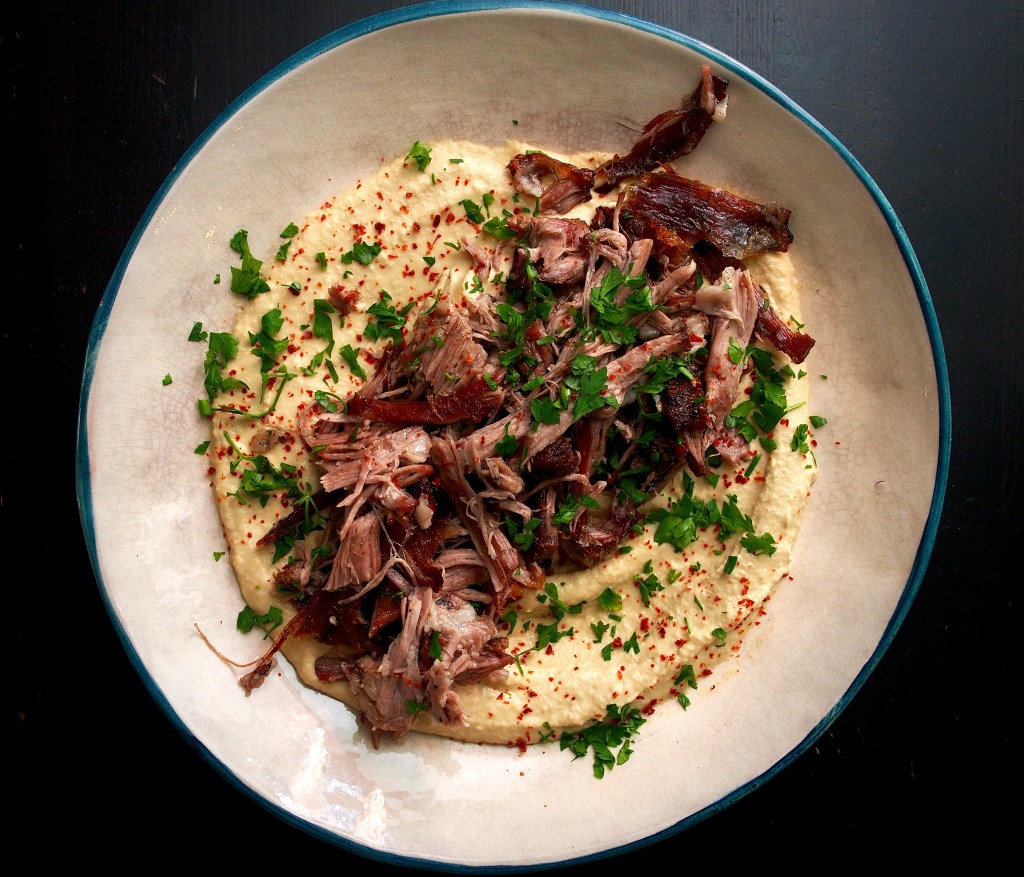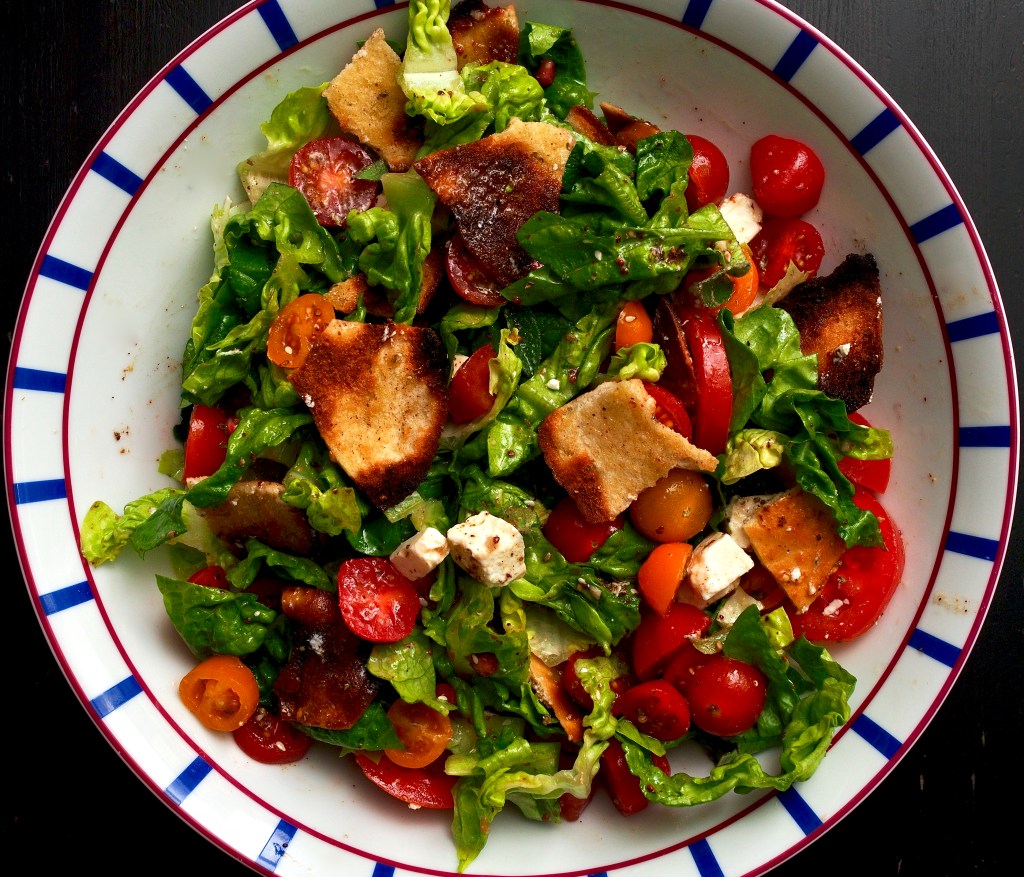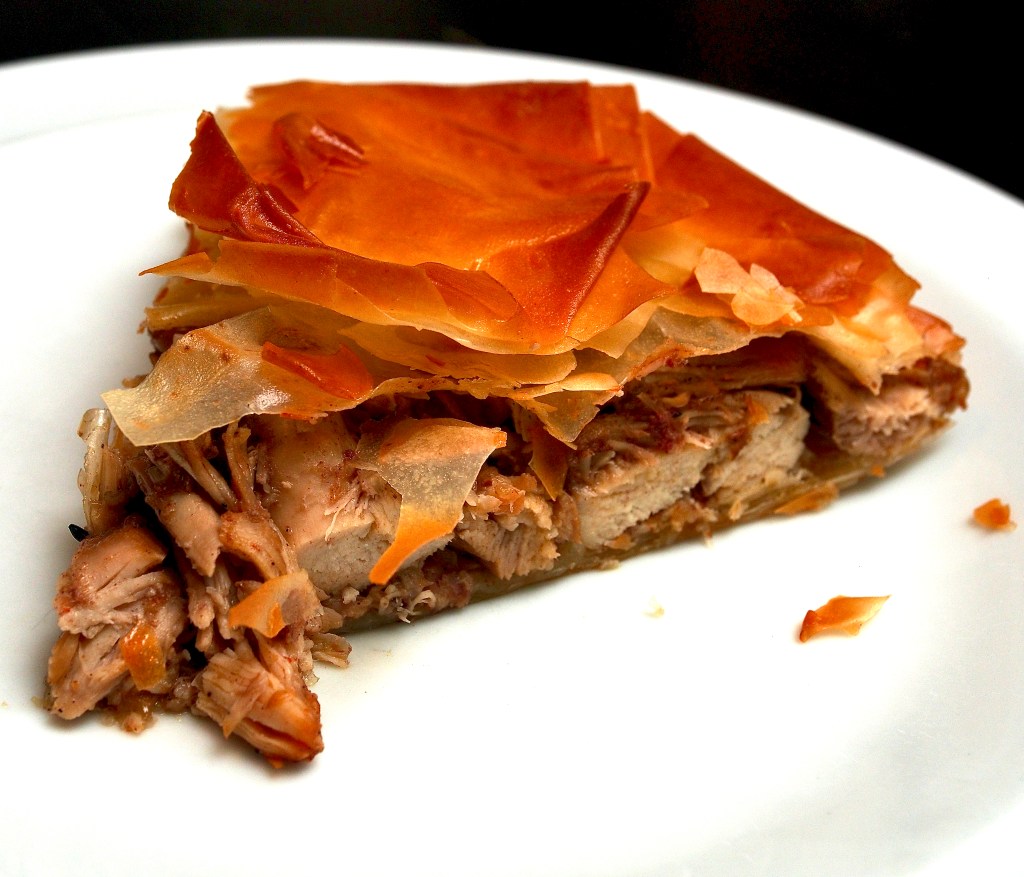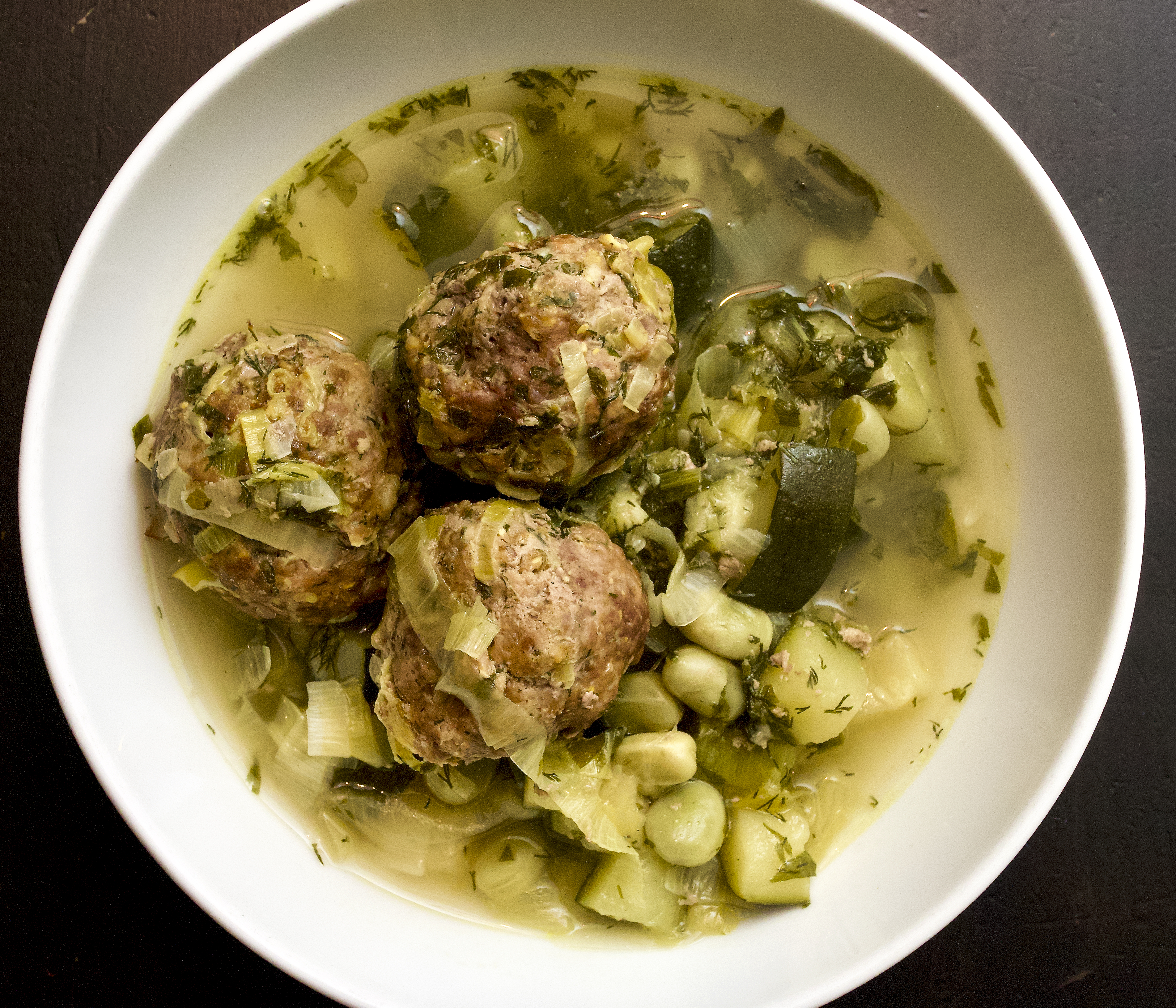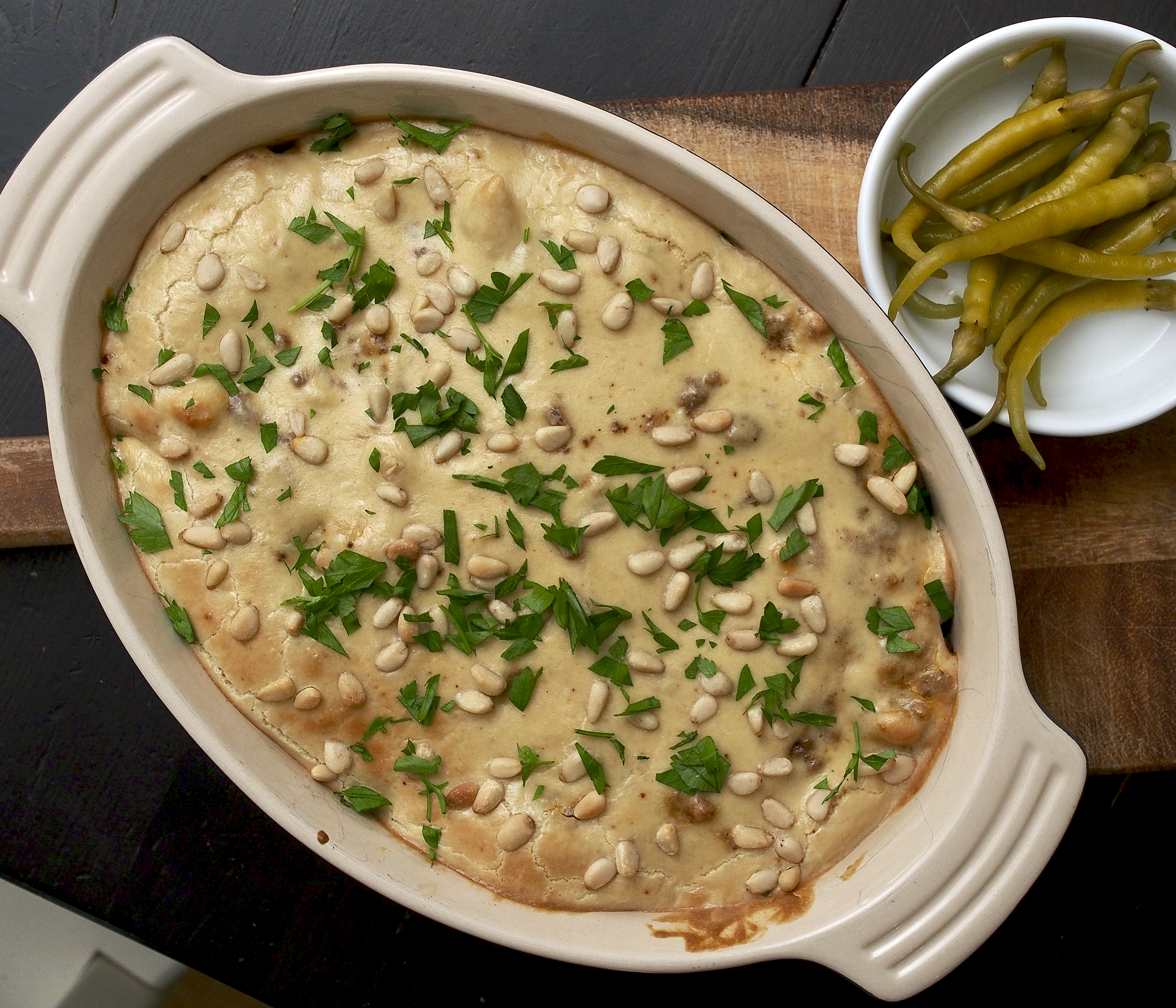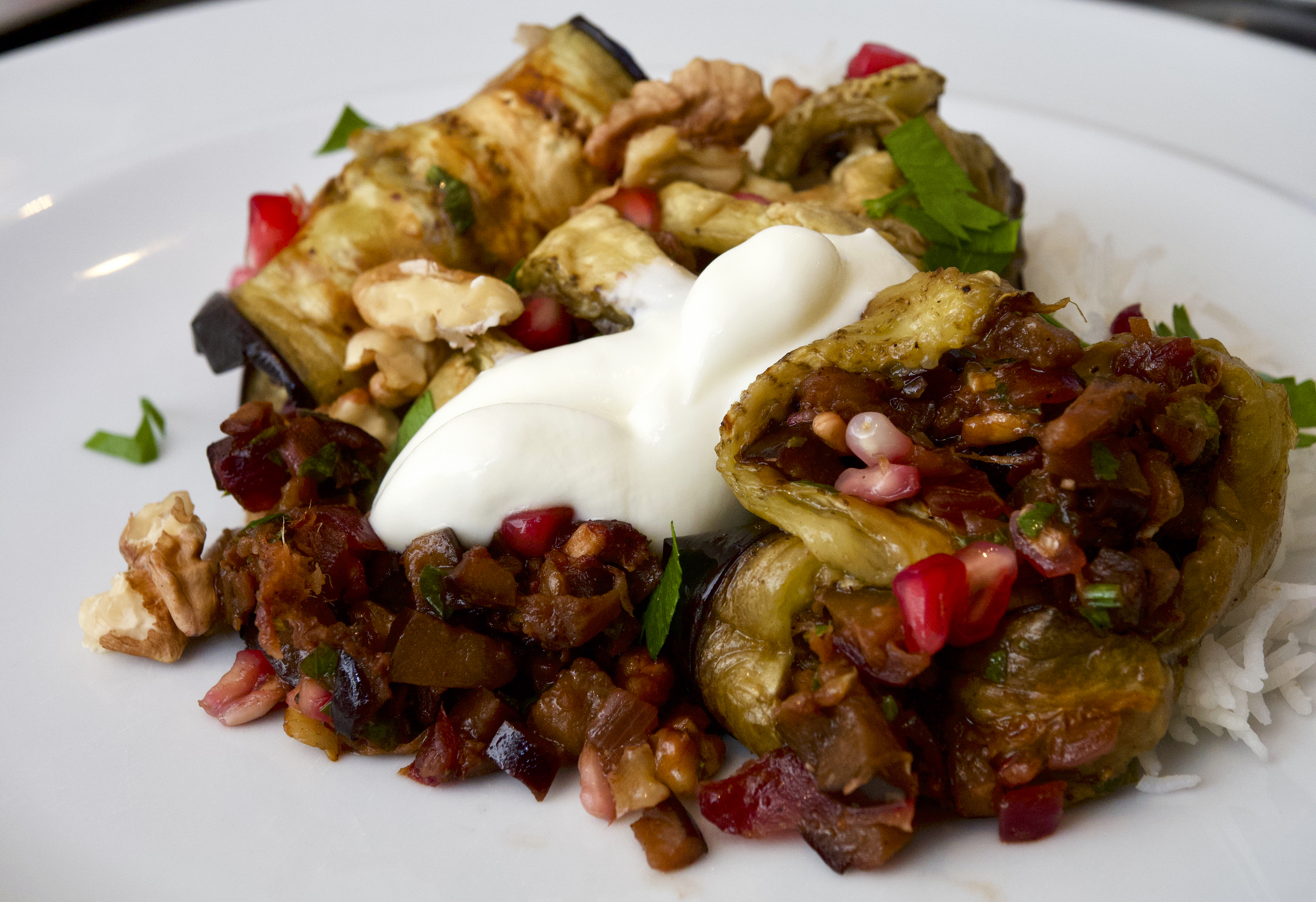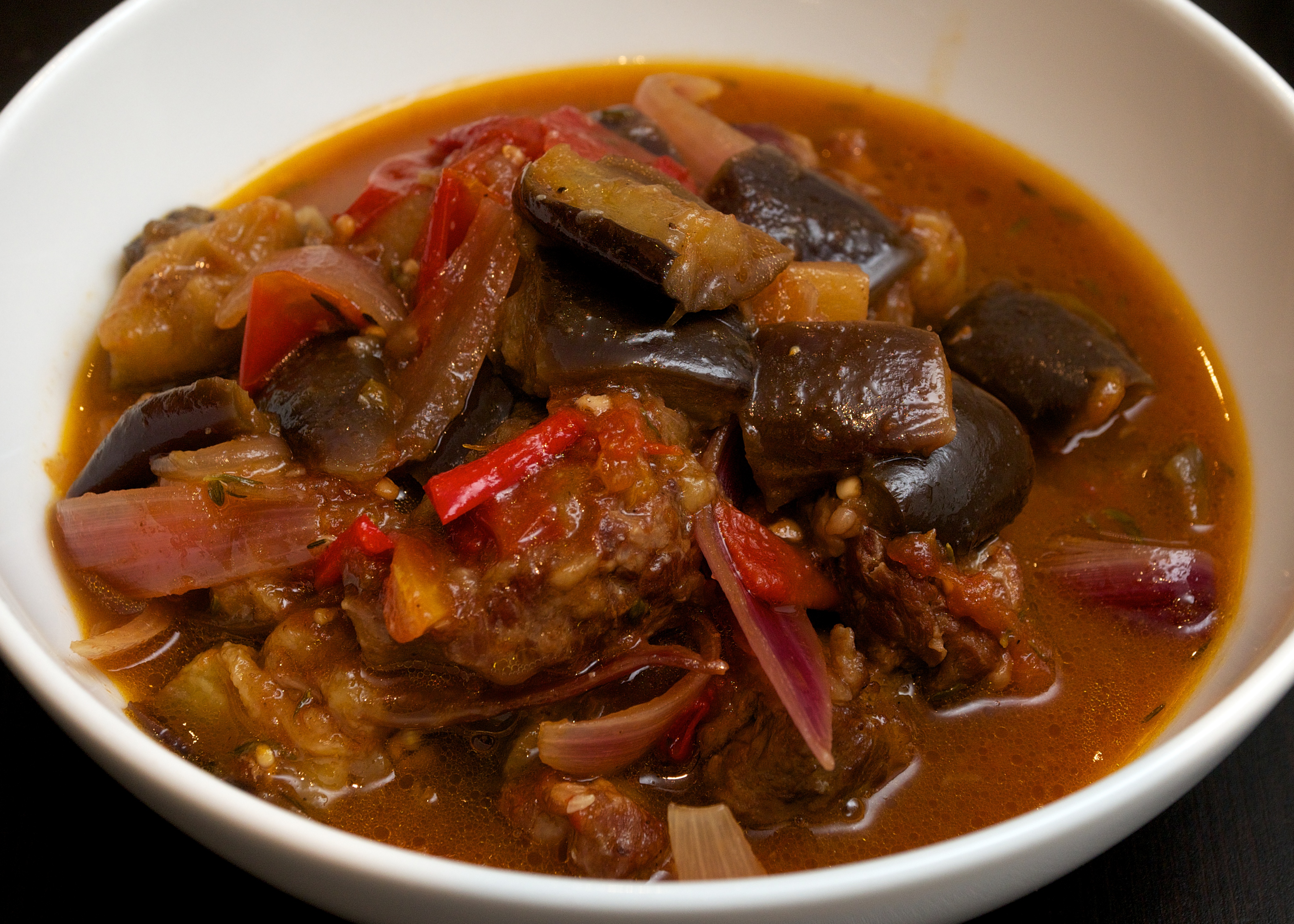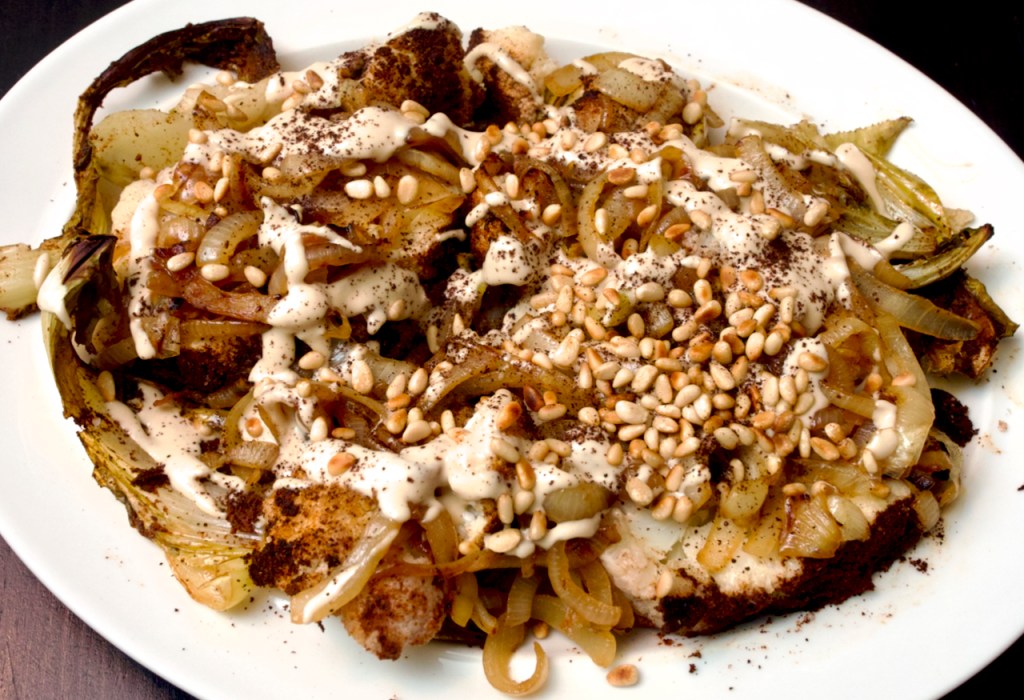
We can’t get enough of roasted cauliflower and it’s at it’s best in this recipe with caramelised onions and smothered in tahini dressing.
Wine Suggestion: We’re mad for Loire Cabernet Franc and found a new vigneron on our last trip to Saumur: Domaine Théo Blet. We picked up his Saumur Rouge “les Fabureaux” and were completely charmed. Plus it went delightfully with this dish, complementing the spices and earthy tahini.
Cauliflower ‘shawarma’ – serves 2 as a main or more as a side or starter
- 1 medium cauliflower, leaves attached
- 2 tbsp olive oil
- 3 tbsp baharat spice mix
- 1 tsp sea salt
FOR THE CARAMELISED ONIONS:
- 2 large onions, peeled and sliced
- 1 tbsp olive oil
- ½ tsp salt
- 1 tsp sugar
FOR THE TAHINI DRESSING:
- 1 lemon
- 125g tahini paste
- a pinch of salt
- 100-130ml water
FOR THE GARNISH:
- 2 tbsp roasted pine nuts
- 1 tsp sumac
- pittas or crispy pitta shards, to serve
Preheat the oven to 200C/180C Fan/Gas mark 6.
Put the whole cauliflower, including the leaves, into an ovenproof saucepan that it fits in snugly. Fill the pan with enough water to just cover the stem and leaves. Drizzle the oil all over the florets and sprinkle with the baharat spice mix and sea salt – it will seem like a lot but go with it. Put the pan into the oven and roast for 1-1½ hours. It is ready when you can easily insert a small knife right down the stem.
Meanwhile, put the onions in a frying pan with the oil and salt and fry over a low heat until soft and golden. Add the sugar and cook until the onions are caramelised and brown, then remove from the heat.
Mix the tahini paste in a small bowl with the juice of half the lemon and the salt. Add 100ml water and mix well. Keep stirring and gradually adding water until the paste has a loose creamy texture.
Lift the cooked cauliflower out of the water and cut into thick slices, including the stems and leaves. Divide between plates, then squeeze over the other half of the lemon and top with the caramelised onions and tahini paste. Garnish with pine nuts and sumac and serve with warm pittas or crispy flatbread.
(Original recipe from Honey & Co. Food from the Middle East by Sarit Packer & Itamar Srulovich, Saltyard Books, 2014.)
